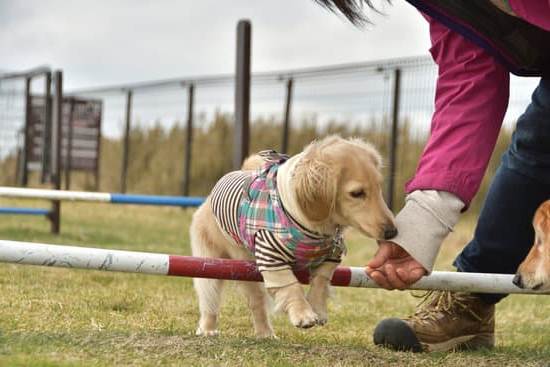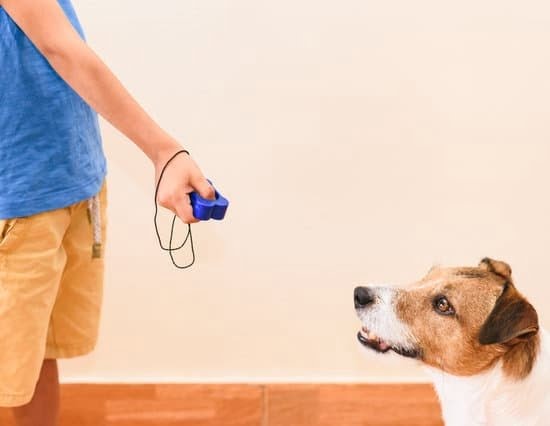Are you looking to learn how to train your dog simple tricks? Training your dog can be a fun and rewarding experience for both you and your furry friend. Not only does it strengthen the bond between you, but it also helps keep your pet safe and well-behaved. In this article, we’ll explore the importance of training your dog and provide a comprehensive guide on teaching them simple tricks.
Training your dog is crucial for their safety and well-being. By teaching them basic commands, you can prevent them from engaging in potentially dangerous behaviors such as running into the street or jumping on strangers. Additionally, training provides mental stimulation for your dog, keeping them happy and fulfilled.
Before diving into more advanced tricks, it’s important to build a strong foundation with basic commands. This includes teaching your dog to sit, stay, and come when called. Once these fundamental skills are mastered, you can move on to more complex tricks that will impress your friends and family.
Choosing the right treats as incentives for your pooch is also essential in training. High-quality treats that are both delicious and nutritious will motivate your dog to learn new tricks and behaviors. With patience, consistency, and the right incentives, you can successfully train your dog to perform simple yet impressive tricks.
Getting Started
When learning how to train your dog simple tricks, it is crucial to start with the basics. Teaching your dog these foundational commands will lay the groundwork for a successful training journey. By mastering these simple tricks, your dog will not only become a well-behaved and obedient pet but also develop the necessary skills to progress to more advanced tricks.
To begin training your dog basic commands, it’s important to use positive reinforcement techniques and find the right incentives that motivate your furry friend. Consistency and patience are also essential when teaching these commands. Establishing a regular training schedule will help reinforce the desired behavior in your dog and lead to optimal results.
| Basic Command | Description |
|---|---|
| Sit | This command teaches your dog to sit down on command, which can be useful for various situations. |
| Stay | This command instructs your dog to remain in a specific position until released. |
| Come | This command calls your dog back to you, ensuring they return when called. |
Choosing the Right Treats
When it comes to training your dog simple tricks, choosing the right treats can make all the difference. The perfect incentive can motivate your pooch to learn new tricks and commands more effectively. Here are some tips for finding the best treats for your furry friend.
Understanding Your Dog’s Preferences
Every dog has their own unique preferences when it comes to treats. Some may be motivated by small, soft treats that they can easily consume, while others may prefer larger, crunchy treats that take longer to eat. Take the time to observe what types of treats your dog responds to best, and use this information to your advantage during training sessions.
Healthy and Tasty Options
While it may be tempting to reach for high-fat, high-calorie treats during training sessions, it’s important to prioritize your dog’s health. Look for options that are not only tasty but also healthy. There are plenty of commercial treats available that are specifically designed for training purposes, with low calorie counts and natural ingredients. Alternatively, you can use small pieces of cooked chicken or carrots as a healthy and delicious reward.
Varying Treats for Motivation
To keep your dog engaged and motivated during training sessions, consider using a variety of treats. This can prevent your pup from getting bored or losing interest in the training process. By mixing up the types of treats you use – such as incorporating different flavors or textures – you can keep your dog excited about learning new tricks and commands.
By paying attention to what motivates your dog and choosing the right treats accordingly, you will set yourself up for success when it comes to training your furry companion how to train your dog simple tricks. Consistency in treating will help reinforce positive behavior and deepen the bond between you and your pet.
Teaching Sit, Stay, and Come
Teaching your dog simple commands like sit, stay, and come is essential for their safety and your peace of mind. These commands form the foundation of your dog’s obedience training and can help prevent them from getting into dangerous situations. Here’s how to train your dog simple tricks:
1. Sit: Start by holding a treat in your hand and letting your dog smell it. Slowly move your hand up and over their head, which will naturally cause them to sit down. As soon as their bottom touches the ground, say “sit” and give them the treat. Repeat this process several times until they start sitting without needing you to lure them with a treat.
2. Stay: Once your dog has mastered sitting on command, you can move on to teaching them to stay. Start by having them sit, then hold out your hand and say “stay.” Take a step back, wait a few seconds, then return to them and give them a treat. Gradually increase the distance between you and your dog as they become more confident in staying put.
3. Come: Teaching your dog to come when called is crucial for their safety, especially when they are off-leash. Start by getting down on their level and saying “come” while patting the ground or using an excited voice to encourage them. When they come to you, reward them with a treat and plenty of praise.
By consistently practicing these commands with patience and positive reinforcement, you can effectively teach your dog these essential tricks and strengthen the bond between you both. Remember that every dog learns at their own pace, so be patient and celebrate each small victory along the way.
Mastering the Art of Shake and High Five
Now that your dog has mastered the essential commands of sit, stay, and come, it’s time to move on to some fun tricks that will impress your friends and showcase your furry friend’s intelligence. Teaching your dog how to shake and give a high five is not only entertaining, but it also provides mental stimulation for your pup, strengthening the bond between you two.
Patience and Persistence
When teaching your dog these tricks, patience and persistence are key. Not all dogs will pick up on these tricks quickly, so it’s important to remain patient and consistent in your training. Use positive reinforcement with treats and praise to encourage your dog to continue trying until they get it right.
Step-by-Step Training Process
To teach your dog how to shake, start by commanding them to sit. Then, hold a treat in your hand and let them sniff it. When they paw at your hand in an attempt to get the treat, say “shake” and reward them with the treat. Repeat this process until they begin to lift their paw without needing to smell the treat first.
For teaching the high five trick, start with a sitting or standing position for your dog. Hold a treat in one hand and raise it slightly above their head. As they reach up with their paw to try to get the treat, say “high five” and reward them with the treat when they make contact with your hand.
Adding Your Own Spin
Once your dog has mastered the basics of these tricks, you can add some creativity and variation to make them even more impressive. You can teach them to alternate paws for shaking or high fiving, or even incorporate different hand signals or verbal cues for each trick.
By mastering the art of shake and high five, not only will you be able to show off your dog’s impressive skills at social gatherings, but you’ll also have a blast bonding with your pet through the training process. Remember that every dog learns at their own pace, so be patient and enjoy the journey of teaching new tricks while strengthening the bond with your beloved canine companion.
Tackling More Advanced Tricks
When it comes to training your dog, mastering the basics is just the beginning. Once your pooch has a solid understanding of sit, stay, and come, it’s time to move on to more advanced tricks that will truly impress your friends and family. In this section, we’ll explore how to teach your dog to roll over, play dead, and spin.
Rolling over is a fun trick that can also be a great way to give your dog some exercise and mental stimulation. Start by commanding your dog to lie down, then hold a treat near their nose and slowly move it in a circle above their head.
As they follow the treat with their nose, they should naturally roll onto their back. Once they’ve completed the full roll, be sure to reward them with the treat and plenty of praise.
Playing dead is another entertaining trick that can showcase your dog’s intelligence and obedience. Begin by having your dog lie down, then gently touch their side while giving the command “bang” or “play dead.” As soon as they lay on their side, reward them with a treat and positive reinforcement. With consistent practice and patience, your furry friend will soon master this impressive trick.
Finally, teaching your dog to spin is a great way to show off their agility and coordination. Start by guiding them in a circle with a treat until they complete a full spin. As always, reward them generously for their effort and continue practicing until they can perform the trick on command. With dedication and consistency, you’ll be amazed at how quickly your dog can pick up these advanced tricks.
By taking the time to teach your dog these more advanced tricks, you’ll not only be entertaining those around you but also providing valuable mental stimulation for your furry companion. Remember to always use positive reinforcement and plenty of patience as you work through these new challenges together.
Troubleshooting
Training your dog to perform simple tricks can be a fun and rewarding experience, but it’s not without its challenges. One common problem that many dog owners face is their pet’s lack of interest or motivation during training sessions. This can be addressed by finding the right incentives and rewards for your dog. It’s important to experiment with different treats and toys to figure out what motivates your furry friend the most.
Another common challenge is maintaining your dog’s focus during training. Dogs are easily distracted, especially in new environments or around other animals. To overcome this, it’s important to start training in a quiet and familiar setting, gradually introducing distractions as your dog becomes more proficient with the tricks. Additionally, keeping training sessions short and engaging can help maintain your dog’s attention.
One more challenge that many dog owners encounter is dealing with stubborn behavior or resistance from their pets. If your dog seems uninterested or unwilling to learn new tricks, it’s crucial to remain patient and persistent. Use positive reinforcement and break down the trick into smaller steps to make it more manageable for your furry companion.
| Common Challenges | How to Overcome Them |
|---|---|
| Lack of interest/motivation | Experiment with different treats and toys; find what motivates your dog |
| Lack of focus during training | Start in a quiet setting, gradually introduce distractions; keep sessions short and engaging |
| Stubborn behavior/resistance | Be patient and persistent; use positive reinforcement and break down tricks into smaller steps |
Consistency Is Key
Training your dog to perform simple tricks can be a fun and rewarding experience for both you and your furry friend. However, in order to achieve optimal results, consistency is key. Establishing a regular training schedule is essential for reinforcing the commands and behaviors you want your dog to learn. Here are some tips for building a consistent training routine:
- Set aside dedicated time: Choose a specific time of day when you and your dog can focus on training without distractions. This could be in the morning before work, in the evening after dinner, or whenever it best fits into your daily schedule.
- Be consistent with commands: Use the same verbal cues and hand signals each time you practice a trick with your dog. Consistency in your communication will help reinforce the learning process.
- Reward good behavior consistently: Whether it’s with praise, treats, or toys, make sure to reward your dog every time they successfully perform a trick or command. This positive reinforcement will motivate them to continue learning.
In addition to establishing a regular training schedule, it’s important to remain patient and persistent during the process. Dogs thrive on routine and repetition, so the more consistent you are with your training efforts, the faster and more effectively your pooch will learn.
Remember that every dog is different, so it’s important to tailor your training approach to suit their individual personality and learning style. By being patient, staying consistent, and celebrating small victories along the way, you’ll be well on your way to teaching your dog simple tricks that will impress everyone around you.
Conclusion
In conclusion, training your dog simple tricks can be a rewarding and bonding experience for both you and your furry friend. By understanding the importance of training and building a strong foundation with basic commands, you are laying the groundwork for a well-behaved and happy pup. Choosing the right treats as an incentive for your dog can make the training process enjoyable and effective.
As you teach essential commands like sit, stay, and come, you are not only ensuring your dog’s safety but also setting the stage for more advanced tricks. Mastering fun tricks like shake and high five can impress your friends and show off your dog’s skills. And as you tackle more advanced tricks such as rolling over, playing dead, and spin, you are strengthening the bond between you and your dog while providing mental stimulation for them.
Remember that consistency is key when it comes to training your dog. Establishing a regular training schedule will lead to optimal results. And when faced with common challenges during the training process, troubleshooting techniques can help you overcome them.
Celebrate every small success along the way, and before long, you’ll be amazed at how much progress your dog has made. Training your dog simple tricks is not just about teaching them new skills; it’s also about deepening your bond through positive reinforcement and spending quality time together.

Welcome to the blog! I am a professional dog trainer and have been working with dogs for many years. In this blog, I will be discussing various topics related to dog training, including tips, tricks, and advice. I hope you find this information helpful and informative. Thanks for reading!





